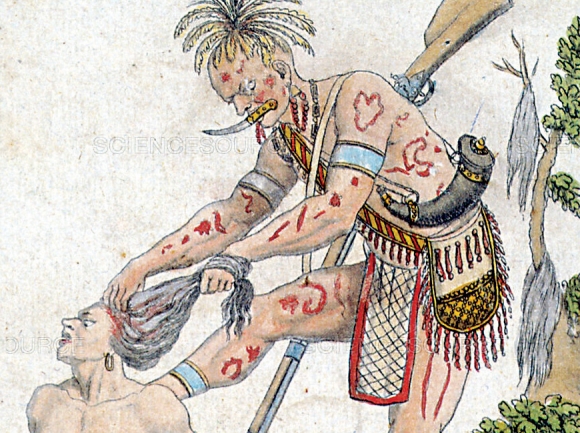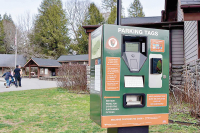Did the southeastern Native Americans take scalps?

(Editor’s Note: Readers should be cautioned that several of the descriptions of scalping and related practices presented in this column are graphic.)
When I was a boy, incidents of scalping by Native Americans were a staple in the old-time movies about the “Wild West.” And there is no doubt whatsoever that the western tribes utilized that practice. But what about the Cherokee, Creek, Catawba and other southeastern tribes — to what extent was scalping a part of their warfare and ritual?
The most informative online source I could locate was “An Analysis of Scalping Cases and Treatment of the Victims Corpses in Prehistoric North America” by Troy Case, who made the following observations (www.dickshovel.com/scalp.html):
“Although the origin of scalping in the New World is unknown, it was a widespread practice among Native American groups during the historic period … Archaeological evidence for the scalping custom in prehistoric North America [is evidenced] as either a characteristic lesion of the frontal and parietals indicating survival of a scalping event, or as a distinct pattern of cut marks in small, parallel clusters that encircled the skull.
“A woman’s or child’s scalp was considered a sign of even greater valor than the taking of a scalp on the battlefield, because it indicated that the warrior had penetrated all the way into the enemy’s village, a feat which required great skill.
“Just as being a woman was no protection from scalping, being a child also appears not to have always been a deterrent to becoming a victim of this custom. The youngest prehistoric victim of scalping found in [my] study was a child between the ages of five and seven years [who] may have provided trophies in two different raids. The presence on the cranium of a characteristic scalping lesion with some bone remodeling indicates that the child survived an initial scalping event by at least two weeks before being killed in yet another raid. Obviously there was no scalp left on this child to take as a trophy, but both hands appear to have been removed by breaking the radii and ulnae toward their distal ends, and these hands were probably kept as trophies, along with the head of another individual from the site who was quite obviously decapitated.”
Related Items
There is at least a suggestion that women who survived scalping were accepted back into their communities (while) there is no definite evidence of men surviving a scalping incident and continuing to live within their tribes but in at least one tribe there was a practice of shunning males who survived scalping and treating them as if they were ghosts or beings with supernatural powers.
In his History, Myths, and Sacred Formulas of the Cherokees, the 19th century anthropologist James Moooney, who lived on the Qualla Boundary (present-day Cherokee) during the late 1880s, described the scalp dance: “This dance, common to every tribe east of the Rocky Mountains, was held to celebrate the taking of fresh scalps from the enemy. These scalps, painted red on the fleshy side, decorated and stretched in small hoops attached to the ends of poles, were carried in the dance by the wives and sweethearts of the warriors.”
Charles Hudson, an anthropologist at the University of Georgia, noted in his The Southeastern Indians (University of Tennessee Press, 1976), that scalping was evidently an old practice in the Southeast: “If a man was killed, the attackers tried to get his scalp. They did this by cutting an incision around the head, usually with a small cane knife, and by placing their feet on the victim’s neck, they were able to pull off the scalp. Later the scalp was tied to a small hoop, painted red, and preserved.”
(George Ellison is a naturalist and writer. He can be reached at This email address is being protected from spambots. You need JavaScript enabled to view it..)









